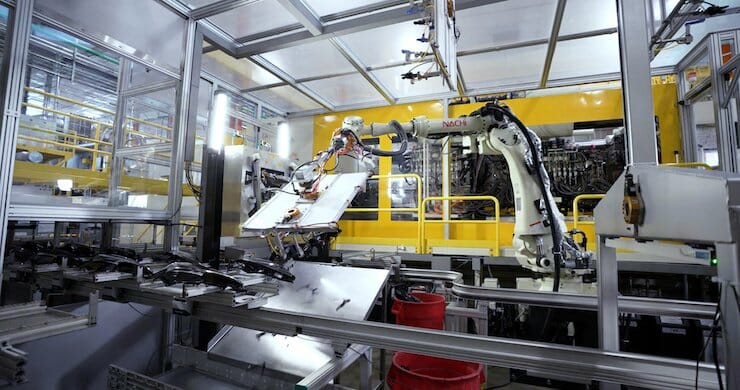MakerBot 3D printing technology has been harnessed by North American Lighting (NAL) to additively manufacture jigs, fixtures and tooling within its automotive lighting assembly line.
North American Lighting, a Koito Group Company, has been manufacturing automotive lighting systems for vehicle manufacturers since 1983. The company has eight facilities across the U.S. and provides advanced lighting technology, engineering design expertise and state-of-the-art production capabilities.
NAL works with some of the largest automotive OEMs in America like Ford and GMC, so speed and precision are critical. Assembly production tools are essential to ensure that production continues smoothly. If a part breaks, that could mean extended lead times and added costs.
Joey Carpenter, production engineering technician, began using 3D printing to bring tooling production in-house and reduce potential disruptions. He was new to 3D printing when introduced to the MakerBot METHOD X series in early 2022. Carpenter has since become the resident expert at the company.
Prior to adopting additive manufacturing, Carpenter and his team relied on external vendors to design, produce and send back parts that were needed. Receiving a new part would take several weeks, meaning orders were frequently late, forcing the company to readjust its timelines.
“Now with METHOD X in house, there is minimal wait time,” said Carpenter. “In 12 hours, we have what we need to build an end of arm tool. Not only does this drastically reduce our wait times, but we are also seeing a massive cost reduction. The cost to 3D print a part in nylon carbon fibre is one-third the price of what we were paying for outsourced aluminium parts.”
“Since we started 3D printing, our overhead costs decreased by half because we don’t have to stock up on excess parts,” Carpenter continued. “We have reduced part inventory by 50%. Now all of our tool designs are digital so they’re easier and quicker for us to access, iterate and print as we need. Instead of waiting weeks, we can turn parts around in five days, from design to assembly.”

In the company’s Flora factory, robots use around 200 end of arm tools a year. Bringing tooling production in-house allows the team to significantly reduce costs while saving time. Whilst Carpenter mainly prints end of arm tool parts, he has also found other applications to utilise the METHOD X for.
The Assembly and Lighting team at NAL also use the METHOD X in the Flora facility to produce nest blocks for the assembly line. The blocks go into the tooling on the assembly line and keep parts in place while the machine works on them.
“There would be a four-to-six-week lead time before getting a part back, and the cost would be pretty high.” said Dee Jay Griffith, Manufacturing Engineering Technician at NAL. “With Method X, we’re able to print a full nest for less than 10% of the cost and we’re able to do that faster.”
Primarily printed in carbon fibre and PolyMax PC, the nest blocks are lightweight and durable. Since printing the items a few months ago, Griffith has not yet seen any wear on them. He is also experimenting with different materials and has now printed camera mounts, grease tips, leak test seals and more.
Talking about the METHOD X, Griffith added: “We’ve already ROI’d this machine and we’ve only had it for a few months. Just in the savings of what we’ve already printed, not to mention the time we’ve saved doing it ourselves as opposed to waiting for a shop to come in and get it done.”
“I work for a multi-billion dollar company and can afford any 3D printer out there but yet we have five MakerBots in house right now and there’s a reason for that,” Carpenter concluded.

